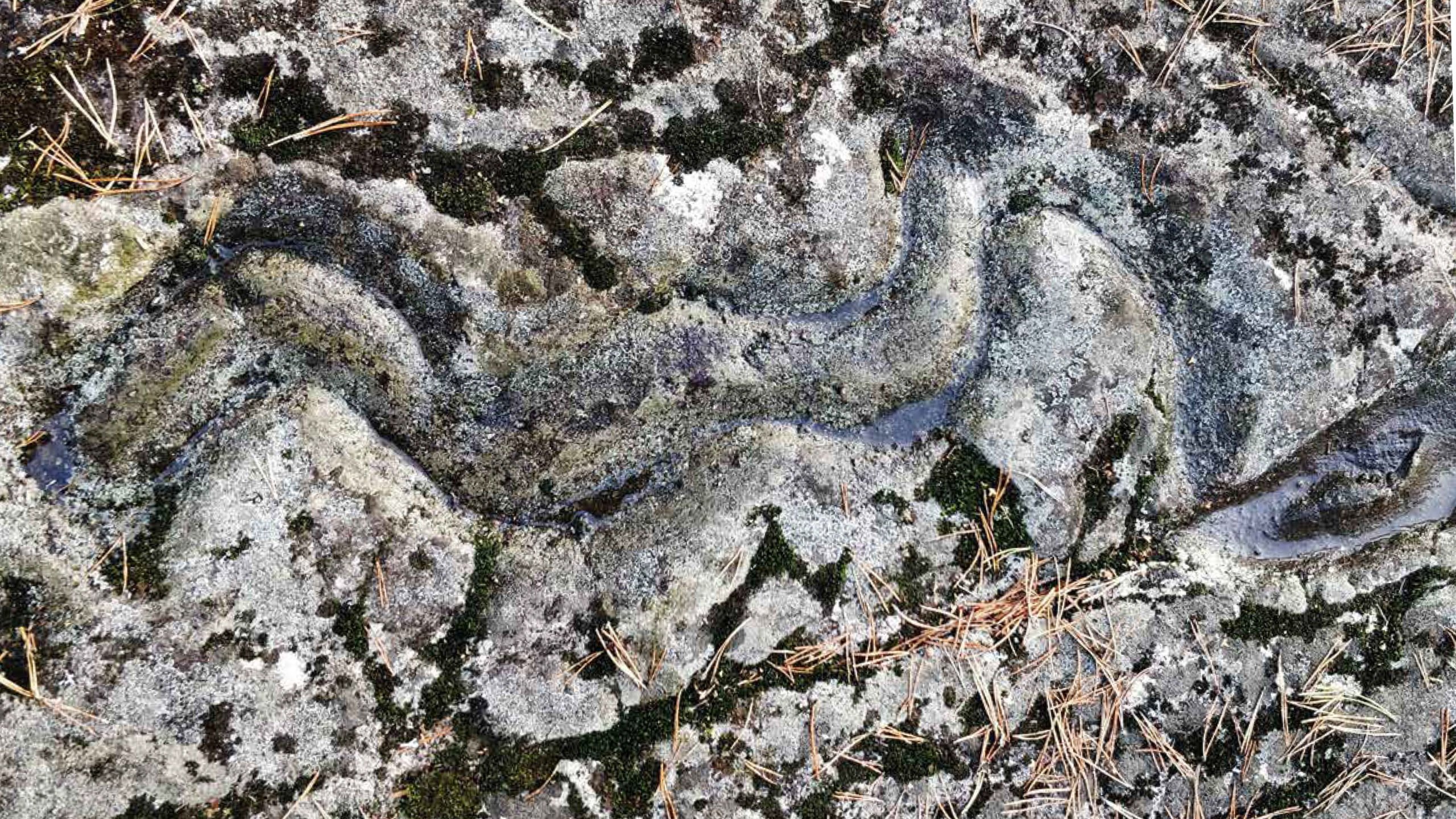There are three snake rocks in South Karelia: as well as in Anola, Joutseno, there is one in Kiurula in the Imatra borderland and another in Taipalsaari. Scholars disagree over the snake formations. Some believe that the snake figure was formed in the rock by nature, due to a rock crystal different from the main rock type, when the rocky material was in a molten state. Other archaeologists maintain that there has originally been a streak in the rock vaguely in the shape of a snake, which man has improved and shaped to look more snakelike. Archaeologists say the work has been done using a spike and the result possibly also ground smooth.
As well as Snake Rock, Anola village in Joutseno has held other signs of early habitation. According to historical records and oral tradition, Anola has had both a sacrificial stone and a rune stone, both destroyed under road works. The sacrificial stone had 4-5 shallow, ground cups. The rune stone bore some kinds of markings or writing. Moreover, plants like the black mullein have been found in the Anola area; another indication of early habitation.
Snakes have held their own powerful status in Finnish folk tradition. The snake occurs frequently in the incantations and belief legends of Finnish-Karelian folklore. The legends describe the snake from two different viewpoints; either they refer to the role of the snake as supernatural guardian in sustaining the farm’s luck with cattle, the so-called house snake, or the snake’s position as the sorcerer’s assistant or tutelary animal. The special status of snakes as sorcerers’ assistants was linked to their mystical ability to operate in two worlds at the same time. The Taipalsaari snake rock was still talked about in the 70s as the rock bearing the image of a snake. This snake figure was believed to hold great powers. Even in winter frosts, the snow melted off the snake image, and a person who sat upon it was miraculously healed.
I am freezing cold. My breath is turning into steam. This is the night I have waited for and dreaded. Earlier today, the village sorcerer woman rinsed my feet and hands with ash water, but now I must walk with her to Snake Rock and hand over my affliction to the snake. All through the summer, I have been ridiculed and mocked, called the wart girl, and shunned. I didn’t ask for these things on my hands and feet, they just came. The villagers whisper that it is my fault. That it is punishment for forbidden touches and trips to the backwood.
I walk towards the rock with the sorcerer woman. The villagers have gathered with their torches around the rock. The oldest folk sit on boulders, others are standing. Someone laughs and points a finger as I walk through the crowd behind the woman. We ascend the rock on its north side, and I am trembling.
The sorcerer takes me to the image of the snake, quietly mumbling her magic words. I can’t make out the words, but I realise that she is whispering to her helper, the snake. The woman has brought her magic objects, which she casts on the rock. A raven flies nearby. The sorcerer woman’s eyes flash, the raven’s cry is her sign. She stands me on the image of the snake and yells madly. The crowd around us falls silent, showing respect to the sorcerer. The old woman kneels on the rock, gesturing that I must place my hands on the snake. The rock is cold and damp, but I am no longer afraid. I want to give my affliction to the snake. Let him take it to another world, to put the curse on others. I weep and my tears fall on the snake image. Suddenly it is all over. The sorcerer raises me up and shows me off to the crowd. Together we descend from the rock, and I have the courage to look people in the eye again.
Before All Saints’ Day, I realise that my hands and feet are healed. The warts have gone.
Text and picture: Ninni Koponen
Translation: Annira Silver
Location on map
The story and the picture are a part of Tarinajoki book (River of Stories), made in Rural Explorer project. As part of a culture tourism project, stories arising from the body of folk narratives and history also have a function in relation to the productisation of tourism. The stories are linked to real locations.
